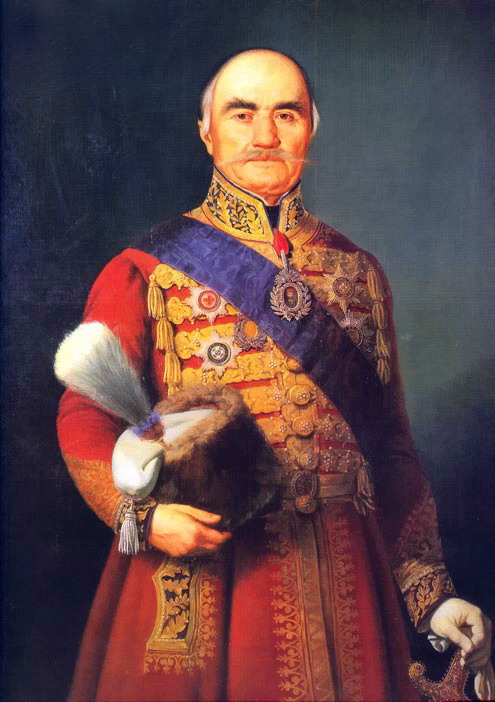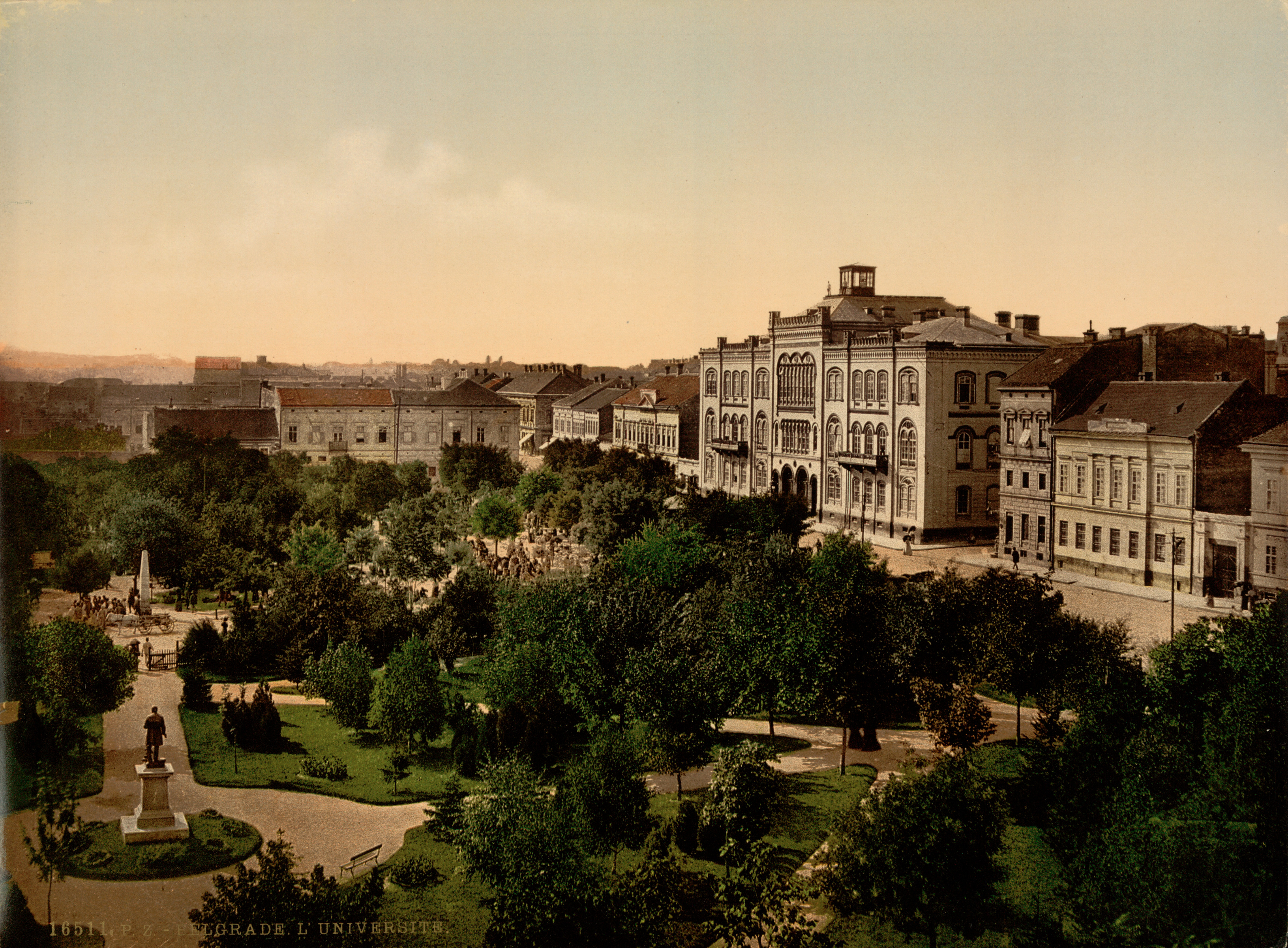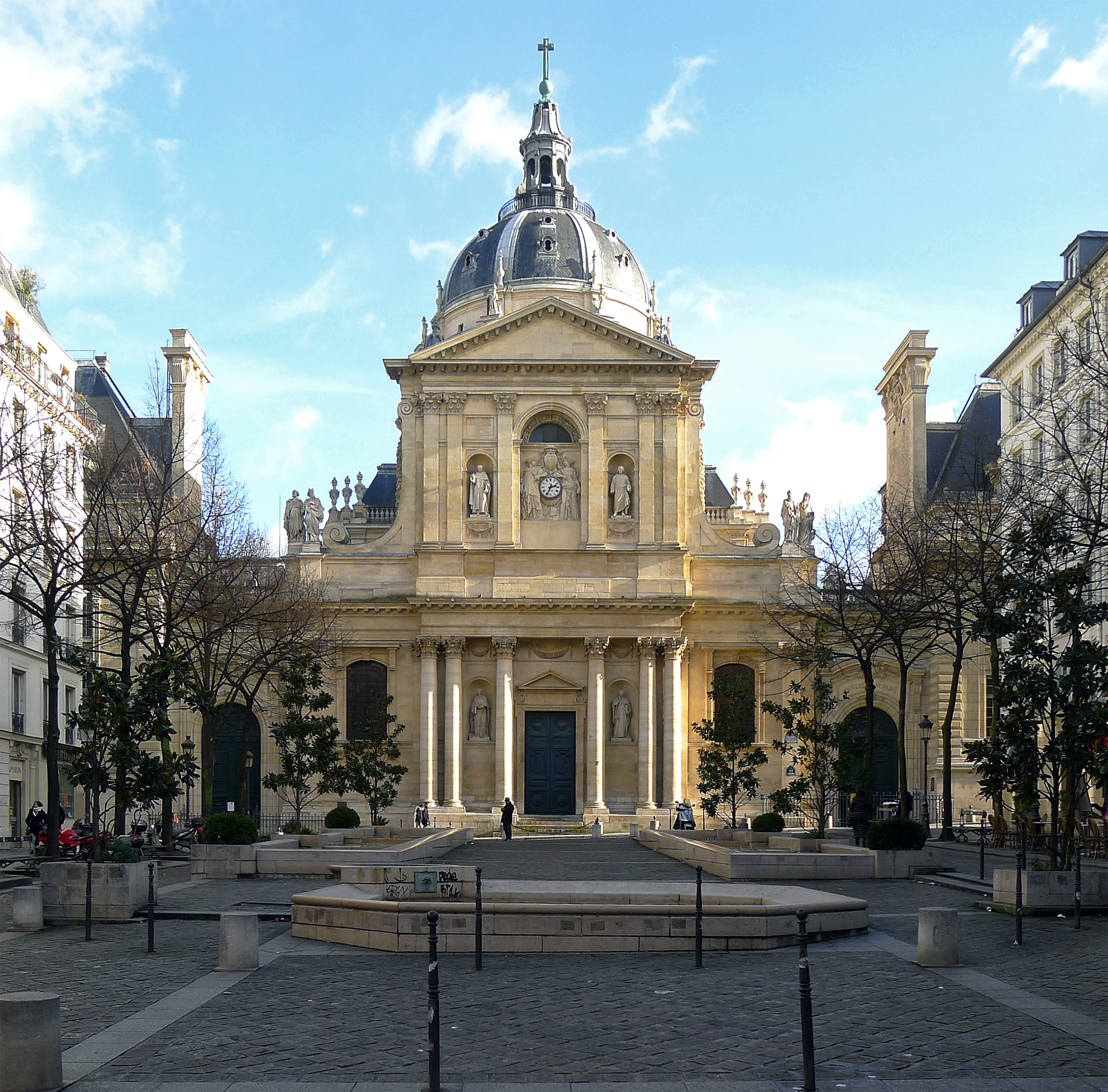|
Jovan Ristić
Jovan Ristić ( sr-Cyrl, Јован Ристић; 16 January 1831 – 4 September 1899) was a Serbian politician, diplomat and historian. Biography Ristić was born in Kragujevac in a poor family where he attended elementary school. In 1842 he entered high school in Belgrade, and in 1847 the lyceum, where he studied until spring of 1849. As a high school student, Ristić participated in the Serbian movement in Hungary in 1848. He went to study in Germany as a state cadet, where he was s student at the University of Berlin under historian Leopold von Ranke. In 1852 Ristić obtained a doctorate degree from Heidelberg University, after which he went to Paris in where he was until 1854, studying French and attending courses at the Sorbonne University and examining old Serbian manuscripts at the National Library of France upon the invitation of the Society of Serbian Literature. Upon his return to Belgrade Ristić failed to obtain a professorship at Belgrade's Grandes écoles, he rec ... [...More Info...] [...Related Items...] OR: [Wikipedia] [Google] [Baidu] |
Prime Minister Of Serbia
The prime minister of Serbia ( sr-Cyrl, премијер Србије, premijer Srbije; feminine gender, feminine: премијерка/premijerka), officially the president of the Government of the Republic of Serbia ( sr-Cyrl, председник Владе Републике Србије, predsednik Vlade Republike Srbije; feminine: председница/predsednica) is the head of the government of Serbia. The role of the prime minister is to direct the work of the government, and submits to the National Assembly (Serbia), National Assembly the Government policy statement, government's program, including a list of proposed Minister (government), ministers. The resignation of the prime minister results in the dismissal of the government. The first officeholder was Matija Nenadović, who became prime minister on 27 August 1805. The current prime minister, Đuro Macut was nominated by the President of Serbia, president of the Republic, Aleksandar Vučić, and elected and appoi ... [...More Info...] [...Related Items...] OR: [Wikipedia] [Google] [Baidu] |
Humboldt University Of Berlin
The Humboldt University of Berlin (, abbreviated HU Berlin) is a public research university in the central borough of Mitte in Berlin, Germany. The university was established by Frederick William III on the initiative of Wilhelm von Humboldt, Johann Gottlieb Fichte and Friedrich Daniel Ernst Schleiermacher as the University of Berlin () in 1809, and opened in 1810. From 1828 until its closure in 1945, it was named the (Royal) Friedrich Wilhelm University of Berlin (FWU Berlin; ). During the Cold War, the university found itself in East Berlin and was ''de facto'' split in two when the Free University of Berlin opened in West Berlin. The university received its current name in honour of Alexander and Wilhelm von Humboldt in 1949. The university is divided into nine faculties including its medical school shared with the Freie Universität Berlin. The university has a student enrollment of around 35,000 students, and offers degree programs in some 171 disciplines from un ... [...More Info...] [...Related Items...] OR: [Wikipedia] [Google] [Baidu] |
Bulgaria
Bulgaria, officially the Republic of Bulgaria, is a country in Southeast Europe. It is situated on the eastern portion of the Balkans directly south of the Danube river and west of the Black Sea. Bulgaria is bordered by Greece and Turkey to the south, Serbia and North Macedonia to the west, and Romania to the north. It covers a territory of and is the tenth largest within the European Union and the List of European countries by area, sixteenth-largest country in Europe by area. Sofia is the nation's capital and List of cities and towns in Bulgaria, largest city; other major cities include Burgas, Plovdiv, and Varna, Bulgaria, Varna. One of the earliest societies in the lands of modern-day Bulgaria was the Karanovo culture (6,500 BC). In the 6th to 3rd century BC, the region was a battleground for ancient Thracians, Persians, Celts and Ancient Macedonians, Macedonians; stability came when the Roman Empire conquered the region in AD 45. After the Roman state splintered, trib ... [...More Info...] [...Related Items...] OR: [Wikipedia] [Google] [Baidu] |
Old Serbia
Old Serbia () is a Serbian historiographical term that is used to describe the territory that according to the dominant school of Serbian historiography in the late 19th century formed the core of the Serbian Empire in 1346–71. The term does not refer to a defined region but over time in the late 19th century and the first decade of the 20th century it came to include the regions of Raška, Kosovo and Metohija and much of modern North Macedonia. The term Old Serbians () were used as designations by Serb authors and later governments for Slavic populations from regions such as Vardar Macedonia. In modern historiography, the concept of Old Serbia as it developed in the 19th century has been criticised as a historical myth, based often on invented or tendentiously interpreted historical events. Terminology Vuk Stefanović Karadžić referred to "Old Serbia" as a territory of the Serb people that was part of medieval Serbia prior to the Ottoman conquest. Milovan Radovanovi� ... [...More Info...] [...Related Items...] OR: [Wikipedia] [Google] [Baidu] |
Milan Obrenović IV
Milan Obrenović IV ( sr-cyr, Милан Обреновић, Milan Obrenović; 22 August 1854 – 11 February 1901) reigned as the Prince of Serbia from 10 June 1868 until 1882, when he became King of Serbia, a title he held until his abdication on 6 March 1889. His son, Alexander I of Serbia, became the second King of Serbia. Early years Birth and infancy in exile Milan Obrenović was born in 1854 in Mărășești in Moldavia, where his family had lived in exile ever since the return of the rival House of Karađorđević to the Serbian throne in 1842 when they managed to depose Milan's cousin Prince Mihailo Obrenović III. Milan was the son of and of his Moldavian wife Marija Obrenović, née Elena Maria Catargiu (1831–1879). Milan's paternal grandfather (Miloš's father) was Jevrem Obrenović (1790–1856), brother of Miloš Obrenović I, Prince of Serbia from 1815 to 1839 and from 1858 to 1860. Milan was therefore Prince Miloš's grandnephew. He had only one ... [...More Info...] [...Related Items...] OR: [Wikipedia] [Google] [Baidu] |
Turkey
Turkey, officially the Republic of Türkiye, is a country mainly located in Anatolia in West Asia, with a relatively small part called East Thrace in Southeast Europe. It borders the Black Sea to the north; Georgia (country), Georgia, Armenia, Azerbaijan, and Iran to the east; Iraq, Syria, and the Mediterranean Sea to the south; and the Aegean Sea, Greece, and Bulgaria to the west. Turkey is home to over 85 million people; most are ethnic Turkish people, Turks, while ethnic Kurds in Turkey, Kurds are the Minorities in Turkey, largest ethnic minority. Officially Secularism in Turkey, a secular state, Turkey has Islam in Turkey, a Muslim-majority population. Ankara is Turkey's capital and second-largest city. Istanbul is its largest city and economic center. Other major cities include İzmir, Bursa, and Antalya. First inhabited by modern humans during the Late Paleolithic, present-day Turkey was home to List of ancient peoples of Anatolia, various ancient peoples. The Hattians ... [...More Info...] [...Related Items...] OR: [Wikipedia] [Google] [Baidu] |
Liberal Party (Kingdom Of Serbia)
The Liberal Party (; abbr. ЛС or LS) was a political party in the Kingdom of Serbia that was led by historian Jovan Ristić and lawyer Jovan Avakumović (1841–1928). History The "Liberals" (либерали / ''liberali''), an opposition group formed in the 1840s, established the Association of Serbian Youth in 1847 (banned in 1851 by the Defenders of the Constitution). These liberals participated in the May Assembly (1–3 May 1848) in Sremski Karlovci and the Petrovdan Assembly (29 June 1848) in Kragujevac. The liberals had an important role in the overthrow of the regime of Prince Aleksandar Karađorđević in 1858, which resulted in the return of the rival Obrenović dynasty. Liberals founded the United Serb Youth. Their ideas were close to those of Jovan Ristić (the later leader of LS). The Liberals were Russophiles and Obrenović-supporters, closely linked with the Serbian Orthodox Church and especially with Metropolitan Mihailo who himself was a liberal. In n ... [...More Info...] [...Related Items...] OR: [Wikipedia] [Google] [Baidu] |
Mihailo Obrenović III
Mihailo ( sr-cyr, Михаило) is a South Slavic masculine given name. It is a variant of the Hebrew name ''Michael'', and its cognates include Mihajlo and Mijailo. Common as a given name among Serbs, it is an uncommon surname. Notable people with the name include: * Mihailo Vojislavljević (–d. 1081)), King of Duklja * Mihailo Ovčarević (), Habsburg Serb commander * Mihailo Đurić (1925–2011), Serbian philosopher, retired professor, and academic * Mihailo Janković (d. 1976), Serbian architect * Mihailo Jovanović (b. 1975), Serbian footballer * Mihailo Lalić (1914–1992), Montenegrin and Serbian novelist * Mihailo Marković (1927-2010), Serbian philosopher * Mihailo Merćep (1864–1937), Serb flight pioneer * Mihailo Obrenović (1823–1868), Prince of Serbia * Mihailo Petrović Alas (1868–1943), Serbian mathematician and inventor * Mihailo Petrović (Chetnik) (1871-1941), Serbian archpriest and freedom fighter * Mihailo Vukdragović (1900–1967), Serbian co ... [...More Info...] [...Related Items...] OR: [Wikipedia] [Google] [Baidu] |
Constantinople
Constantinople (#Names of Constantinople, see other names) was a historical city located on the Bosporus that served as the capital of the Roman Empire, Roman, Byzantine Empire, Byzantine, Latin Empire, Latin, and Ottoman Empire, Ottoman empires between its consecration in 330 until 1930, when it was renamed to Istanbul. Initially as New Rome, Constantinople was founded in 324 during the reign of Constantine the Great on the site of the existing settlement of Byzantium, and shortly thereafter in 330 became the capital of the Roman Empire. Following the collapse of the Western Roman Empire in the late 5th century, Constantinople remained the capital of the Eastern Roman Empire (also known as the Byzantine Empire; 330–1204 and 1261–1453), the Latin Empire (1204–1261), and the Ottoman Empire (1453–1922). Following the Turkish War of Independence, the Turkish capital then moved to Ankara. Although the city had been known as Istanbul since 1453, it was officially renamed as Is ... [...More Info...] [...Related Items...] OR: [Wikipedia] [Google] [Baidu] |
Belgrade Higher School
The University of Belgrade () is a public research university in Belgrade, Serbia. It is the oldest and largest modern university in Serbia. Founded in 1808 as the Belgrade Higher School in revolutionary Serbia, by 1838 it merged with the Kragujevac-based departments into a single university. The university has around 59,600 enrolled students and over 4,600 academic staff members. Since its founding, the university has educated more than 378,000 bachelors, around 25,100 magisters, 29,000 specialists and 14,670 doctors. The university comprises 31 faculties, 12 research institutes, the university library, and 9 university centres. The faculties are organized into four groups: social sciences and humanities; medical sciences; natural sciences and mathematics; and technological sciences. History 19th century The University of Belgrade was established in 1808 as the Belgrade Higher School (; a ''Grandes écoles'') by Dositej Obradović, Serbian key figure in the Age of Enlighten ... [...More Info...] [...Related Items...] OR: [Wikipedia] [Google] [Baidu] |
Bibliothèque Nationale De France
The (; BnF) is the national library of France, located in Paris on two main sites, ''Richelieu'' and ''François-Mitterrand''. It is the national repository of all that is published in France. Some of its extensive collections, including books and manuscripts but also precious objects and artworks, are on display at the BnF Museum (formerly known as the ) on the Richelieu site. The National Library of France is a public establishment under the supervision of the Ministry of Culture. Its mission is to constitute collections, especially the copies of works published in France that must, by law, be deposited there, conserve them, and make them available to the public. It produces a reference catalogue, cooperates with other national and international establishments, as well as participates in research programs. History The National Library of France traces its origin to the royal library founded at the Louvre Palace by Charles V in 1368. Charles had received a collection o ... [...More Info...] [...Related Items...] OR: [Wikipedia] [Google] [Baidu] |
Sorbonne University
Sorbonne University () is a public research university located in Paris, France. The institution's legacy reaches back to the Middle Ages in 1257 when Sorbonne College was established by Robert de Sorbon as a constituent college of the University of Paris, one of the first universities in Europe. Its current iteration was formed in 2018 by the merger of Paris-Sorbonne University (Paris IV) and the Université Pierre et Marie Curie (Paris VI). Sorbonne University is one of the most sought after universities by students and researchers from France, Europe, and the French speaking countries. Most notably, Marie Skłodowska-Curie, who came from Poland in 1891 and joined the Faculty of Sciences of the University of Paris, was also the first woman to become a professor at the Sorbonne. Marie Curie and her husband Pierre Curie are considered the founders of the modern-day Faculty of Science and Engineering of Sorbonne University. As of 2021, its alumni and professors have won 33 ... [...More Info...] [...Related Items...] OR: [Wikipedia] [Google] [Baidu] |






